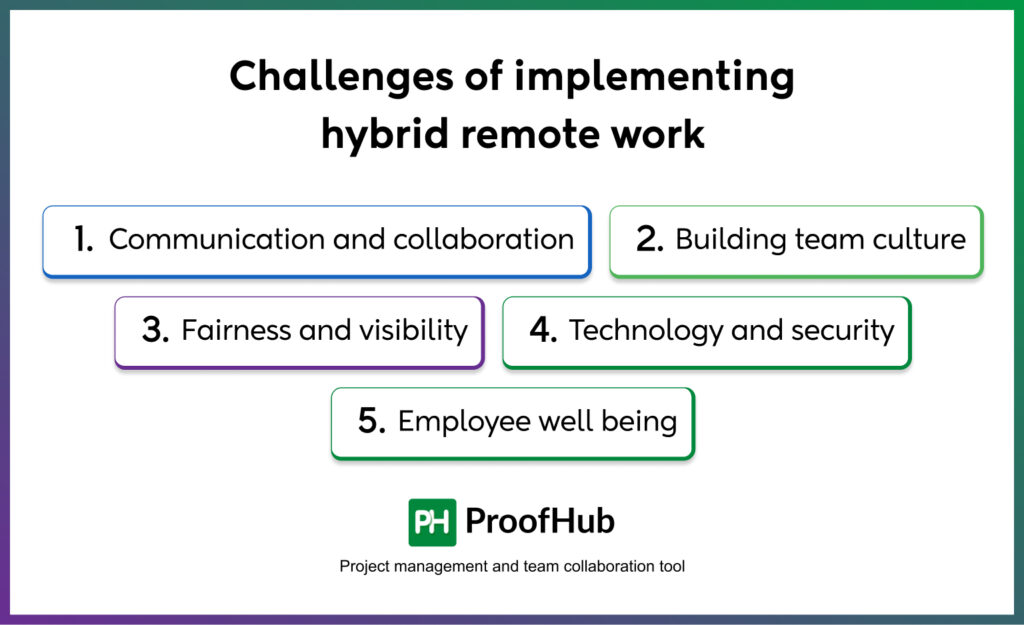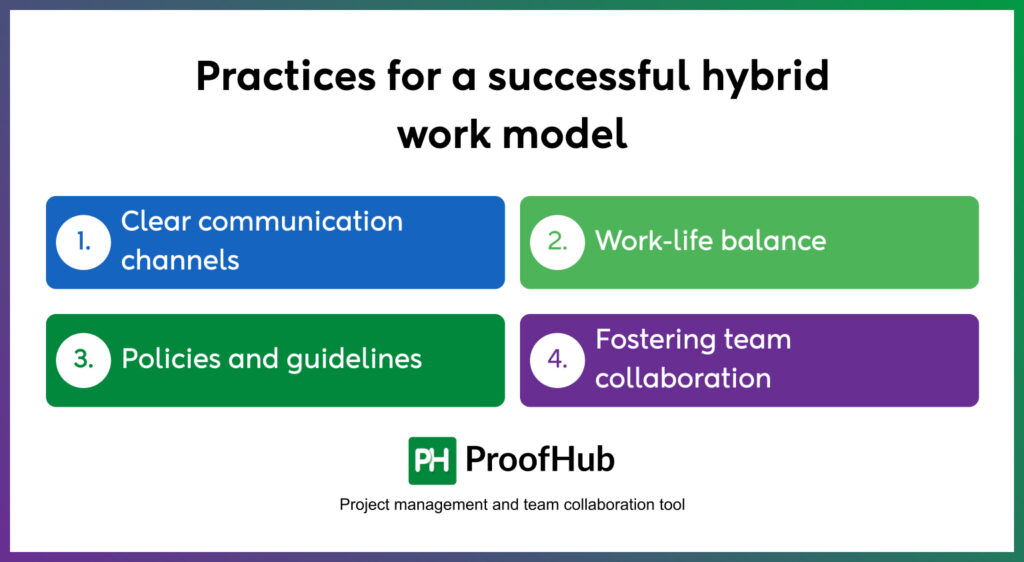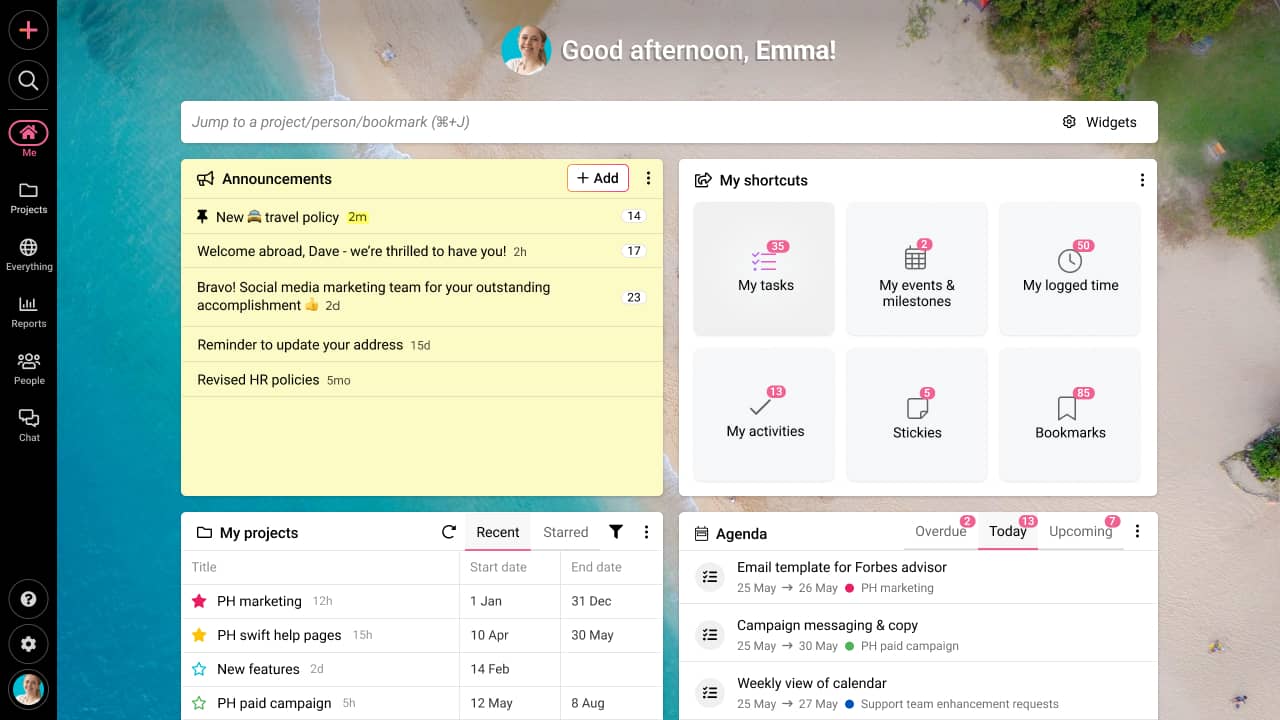Introduction
The future of hybrid remote work is en route to growth. Companies nowadays are hiring employees regardless of their location to hire highly skilled professionals. It is a win-win situation for both the employer and the employee.
Research conducted by GoRemotely says that 73% of all departments are planning to include remote workers till the end of 2028.
What is hybrid remote working?
Hybrid remote working is another type of work arrangement whereby employees work remotely sometimes and also work from the office at other times. Some employees may have the choice of working from home or some other location for at least 2 days a week while the rest of the week they have to be in the office.
This approach seeks to mitigate the advantages of working from home, for instance, flexibility and short commuting hours.
Remote working has become slightly more popular after the Covid-19 strike. After that, as several companies recognized the benefits of working remotely, it became a long-term work strategy for team leaders and managers to promote hybrid remote work.
So whether you are a new entrepreneur or planning to set your team on a hybrid work model, I have brought you this complete guide to hybrid remote work in 2025 and what will be the future.
Prepare for take-off! And gain comprehensive knowledge of hybrid remote working.
The rise of hybrid remote work: latest statistics
Do you know? Remote or hybrid working is not a new trend. It has existed since 1960, and it has gained growth during the 2020 pandemic strike.
The graph shows the adoption of hybrid work since 1960. As you can see the curve has decreased by entering the 20s and has risen significantly in 2020. And according to current circumstances, it won’t be wrong to say that the curve has gone vertical.
A study by Imarc Group states that the market size of global hybrid remote work is growing at a CAGR of 16.5%. This growth will continue to increase tentatively between 2024 – 2032.
Company growth after opting for hybrid remote work
Compared to the traditional working method, companies are growing with a hybrid working model.
Apollo Technical says that 63% of highly-growth companies have used a hybrid remote working model.
Now, let’s discuss how companies are growing in a hybrid remote work policy:
1. Wider talent pool
With a hybrid work model, companies can find and recruit highly skilled staff beyond the boundaries. This not only allows you to access a broad, talented pool to work for you but also paves the way for significant growth and innovation. It increases productivity and leads to better results, fostering an optimistic and forward-thinking environment.
2. Boost productivity
Psychological studies have shown that employees thrive when they are given some control over their work. This empowerment not only leads to better performance and job satisfaction but also fosters a sense of trust and respect, ultimately boosting productivity.
3. Increase business reach
An employee working from another location not only knows about your brand but also becomes an integral part of increasing your brand awareness. Their role in letting others know about the company they work for is crucial in maximizing the reach of your business. This is a good practice, especially for sales-oriented companies and it makes employees feel valued and integral to the company’s success.
Benefits of hybrid remote work for businesses & employees
FlexJobs found that 46% of employees preferred hybrid jobs, and 51% of employees want fully remote jobs.
It states the hybrid work model is going to last longer. Then why not discuss some benefits for you and your employees for remote working? Let’s get started:
| Benefit | For businesses | For employees |
| Enhanced productivity | Giving flexibility to employees produces better results. | Balance in work-life enhances focus and increases workability. |
| Save cost | Decrease the need for additional office spaces and save investment. | Employees save on commuting & transportation costs and work attire. |
| Employee retention | You increase job satisfaction and retain your talent pool. | Flexible schedules let employees think better, and they continuously grow. |
| Business continuity | You can easily manage operations to avoid disruptions. | They can work from any location whenever they need. |
| Innovation & creativity | A diverse working environment can get you creative results. | Employee’s comfortable environments foster creativity, and they perform better. |
Read more: Distributed teams vs. In-house – Who’ll win in the next 5 years
Challenges of implementing hybrid remote work
While there are several benefits of remote hybrid work, it also comes with a few hurdles. These challenges are not impossible to solve, and with the right strategies, they can be effectively managed. Let’s explore how to navigate these hurdles and make the most of the opportunities that hybrid work presents.

1. Communication and collaboration
Challenge: Maintaining people’s awareness, engagement, and togetherness and enhancing collaboration despite geographical separation is challenging.
Solution: Use group video conferencing and project management tools for communication and collaboration, document sharing, and project management. Promote synchronous communication that accepts the working teams’ different time zones.
2. Building team culture
Challenge: One of the key challenges of hybrid work is ensuring that your team remains united in purpose, even when they are not physically together. This is where a strong team culture becomes crucial, fostering a sense of belonging and shared goals among all team members.
Solution: It should be part of the organization’s culture to have periodic, virtual, and face-to-face team-building sessions. It is important to encourage free or non-restricted discussion rooms that will enable people to contribute and disclose any pertinent information in the process.
3. Fairness and visibility
Challenge: Another challenge of hybrid work is ensuring that all employees, regardless of their location, are treated with respect and fairness. This is not just a matter of policy but a reflection of the organization’s commitment to valuing every individual’s contribution.
Solution: Manage in line with the outputs and achievements of the organization. Be sure to give constant feedback to your employees, may it be the good feedback or the bad feedback, even if the employees are remote.
Employ precise measurements of performance indicators and transparent promotion criteria.
4. Technology and security
Challenge: It is crucial to provide proper orientation for the hybrid model and equip remote employees with the necessary tools to ensure secure access to data and applications from remote locations. This is a key aspect of our commitment to maintaining a safe and secure work environment.
Solution: Cloud-based tools for collaboration should be secure, and any cloud storage solutions should be highly protected, as well as ensuring that all employees receive training in cybersecurity.
5. Employee well being
Challenge: Ensuring that the employees working remotely have their mental and physical health balance. It can also happen due to isolation from the team.
Solution: Support work in shifts and tea or coffee breaks to avoid rapid fatigue among employees. Schedule virtual social activities and chances for social interactions. Scholars continued their campaigning centered on intellectual and emotional health provisions.
Best practices for a successful hybrid work model

In order to make a hybrid remote work model successful, you have to associate a few aspects into your work routine. They are as follows:
1. Clear communication channels
Clear and straightforward communication is the cornerstone of the work culture. By encouraging every employee to participate in communication and feedback sessions, you can foster trust and a sense of connection.- This transparent communication also helps us address problems and solve issues effectively.
2. Work-life balance
You shouldn’t expect your employees to always be online when they are working remotely. Respect their privacy, and you can simply leave a message or an email. In case of any urgent work, you can directly call them. Working from a different location gives employees the freedom to think and become creative with their work. It helps them become more productive and bring benefits to your company.
3. Policies and guidelines
You are giving flexibility to your employees but you also have to ensure that they are meeting your expectations. To do that, you can simply create guidelines and hybrid remote work policies to keep the workflow on track. You should always avoid extending working hours while allowing employees to work remotely.
4. Fostering team collaboration and culture
Allowing employees to work remotely isolates them from the team. It makes them miss office fun sometimes, and at a point, they get exhausted. To encourage them, you can simply conduct weekly fun online meetings and organize virtual events. Events like online coffee, poetries, online games, and watching a movie together can enhance collaboration.
After experimenting with all these practices above, you will increase collaboration with your team to get the desired results.
Tools and technologies for hybrid remote work
Using technologies & tools helps you manage and take control of the workflow from a single screen. Here, I am sharing with you the three best tools & technologies to use in remote working environments:
1. ProofHub

ProofHub is an all-in-one project management and team collaboration tool. It helps manage everything from task delegation to employee progress monitoring. ProofHub acquires every necessary feature like task management, collaboration, in-build chat, announcements, reports, calendar, time tracking, proofing custom roles, project templates, security, and many others.
Proofhub has been recognized by top industry leaders, namely Capterra 2024, GetApp category leaders, Top 20 Highly Rates Software, High Performer Spring Season 2024, Front Runners 2023, and Trusted Vendors 2022.
Furthermore, ProofHub is the first choice for top companies like Boeing, NASA, Netflix, Nike, Pinterest and others. It is built on a motto of saving time effortlessly, driving clarity, building transparency, and enhancing your productivity.
Still confused? Take a free trial for 14-days without linking your credit card and self-witness the full-fledged software for hybrid remote work management.
2. Asana

Asana is a professional project management tool that lets you monitor your hybrid team effectively. It also comes with top features like project view, rules, forms, charts, goals, and portfolios to handle all of your professional work.
Asana is built to organize almost every task on a single screen. It helps you monitor day-to-day tasks and long-term adjectives and helps you manage your team members.
Asana can be a reliable tool for all of your remote team management.
3. ClickUp

ClickUp is a modern tool for managing hybrid remote work. Trusted by 2 million+ teams, it saves time, improves collaboration, enhances visibility, and automates workflow. It also comes with AI-powered features that help you make better decisions.
ClickUp can be used by PMOs, marketing, engineers, agency workers, and other IT professionals. It helps team leaders collect reports from the team and allocate useful resources.
From managing your team in a hybrid remote environment to workflow automation, ClickUp is a trusted tool.
Case studies: Companies successfully implementing hybrid remote work
A survey by SHRM found that 95% of employers claim high employee retention due to remote working environments.
Highly active employees deliver quality work. Now let’s know how few top companies implemented remote and hybrid work and what changes they made in their company’s culture.
1. PC Itex
PC Itex is a Ukraine-based food-packing manufacturing company. It was founded in 1997 and manufactures packing bags for salads, sauces, cakes, sushi, bakery, and cooking.
Implementation:
- ProofHub’s project management tool: As a multinational company, they used to communicate with international clients and staff using emails only. Later, they added ProofHub’s project management and team collaboration tool, and now they manage global employees and their work at their fingertips.
- No late deliveries: They are providing round-the-clock service worldwide by digitizing their entire process.
- Centralized management: Unlike paperwork and emailing, PC Itex communicates, sends messages, and manages workflow from a single screen.

Outcomes:
- PC Itex now has a systematic workflow and easy team collaboration with globally working employees.
- They’ve improved their business operations, as every task has its assignee.
- Due to remote onboarding, they are acquiring a highly-skilled, talented pool globally.
Read the complete case study: How ProofHub propelled “PC Itex” to a phenomenal
2. Microsoft
Yes, Microsoft is also on the list. Let us know how they are implementing remote and hybrid work.
Implementation:
- Technology enablement: Microsoft used its products, such as Microsoft Teams, to communicate between working-from-home and physical office workers.
- Flexible work policy: Employees have flexibility since they can select where they are most productive. It means they can work from anywhere they want.
- Employee well-being: Modern practices, such as no meetings on Friday and the company’s provision of mental healthcare services, promote better employee well-being.
Outcomes:
- Reduced turnover because of applied changes in the working conditions and work flexibility.
- Improved satisfaction in the workplace and thus high retention rates.
- No disruption points in the day-to-day operations due to good technological support.
3. Google
Google has millions of employees worldwide. I am sure you are willing to know their remote work policy.
Implementation:
- Work-from-anywhere policy: Google’s policies allow its employees to telecommute up to 14 days per year.
- Office redesign: Google adapted its offices to hybrid work and provided ad hoc areas for interaction when workers are in the office.
- Support systems: Supplying employees with things like Interiors for work and Internet allowance for working from home.
Outcomes:
- Highly innovative and creative in the ideas and the conceptualization of the plan.
- Promoting the quality of work life among employees.
- Sustaining a well-established company culture with the help of constant virtual celebrations and activities.
4. Salesforce Inc.
Salesforce is a popular software company in San Francisco, California, USA. There were around 79,390 active employees globally in the year 2023. Take a look at their remote employee managing strategies:
Implementation:
- Success from anywhere strategy: Salesforce initially implemented the ‘Success from Anywhere’ policy at the company, which allows employees to work remotely from home, the office, or hybrid.
- Digital headquarters: The focus is on implementing a digital orientation to work, using many of the tools and apps offered by Salesforce for better communication.
- Focus on results: Moving from a time-based environment to a focus on the work’s results.
Outcomes:
- Increased efficiency and satisfaction among the organization’s employees.
- Enhanced talent management regarding acquisition and retention due to acceptable working conditions.
- Long-term corporate profits and creativity.
5. Spotify
As a popular music company, Spotify acquires a highly professional workforce across the globe. Here are the tactics they are using for remote teamwork:
Implementation:
- Work from anywhere: Spotify’s parent company implemented the ‘Work from Anywhere’ strategy, allowing employees to decide where to work.
- Hub office model: They continue to preserve specific meeting rooms rather than conducting on-site conferences.
- Global workforce: Such strategies include developing a large talent pool by hiring employees from different areas.
Outcomes:
- Better and more precise communication between employees and managers, thus boosting employee morale and satisfaction.
- Ability to tap talent that does not have to meet geographical or national requirements.
- They sustained a solid organizational culture by promoting team-building activities and events within virtual space.
Future of hybrid remote work
The hybrid work model promotes better work-life balance. Flexibility remains the primary activity concern for both employers and employees. Here’s a breakdown of what to expect:
Research conducted by FlexOS found that about 49% of global workers want a hybrid work schedule. Thus, 17% work from home, while 66% desire the flexi-office working model.
Therefore, it can be stated that the future of both fully remote and hybrid work is quite possible. Here are some additional factors that relate to hybrid and remote work in upcoming future:
1. Employee demand for flexibility: A study from Forbes shows about 98% of employees report their willingness to work from home at least partially, which proves the effectiveness and popularity of blended work arrangements.
2. Engagement and the hybrid advantage: The hybrid work model has a higher employee engagement rate. A survey by Quantum Workplace states that hybrid employees had the highest engagement rate of 81% compared to those who are active on-site.
3. Technology as the enabler: Hybrid remote working is dependent on the use of technology. Businesses will continue to spend money on VOIP communication tools, video conferences, project collaboration tools, and other tools to ensure remote employees work effectively.
Although employees work from home more often, physical offices will remain relevant even in the future.
Wrapping up
It is noteworthy to say that the way we work has changed to a great extent. When it comes to work and time, hybrid remote working from home and partially from the office has become the new trend. The presented overview in this article identifies the advantages of remote working and how it is shaping the future.
Related articles
- Everything we want you to know about working remotely
- 8 Hybrid workforce best practices for 2025
- How to manage hybrid teams for success
- 33 Remote work tools for happy and productive employees
- 5 Best hybrid work software for collaboration and communication for 2025
FAQs
Is hybrid work better than remote work?
Well, it depends. While hybrid work offers social interactions and work-life balance, remote working focuses on work-life balance. Plan what works best for you according to your business type and organizational needs.
What is the difference between onsite remote and hybrid jobs?
Onsite jobs allow employees to work by being active in the office. Remote jobs give employees the privilege to work from anywhere. Hybrid jobs mean some days work in the office and some days work remotely.
What are the 4 pillars of hybrid working?
The four pillars are as follows:
- Development
- Purpose
- Team working models
- Inclusivity

